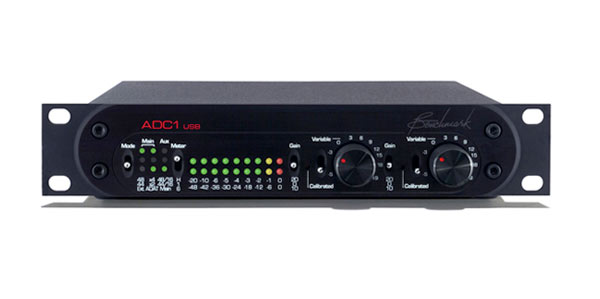Updating the Past Part II
Yesterday I introduced the concept of archiving older recording formats into digital ones while maintaining the fidelity of the original format. What I didn’t talk about was the equipment that you’ll need to successfully make transfers of your analog tapes or your vinyl LPs to new high-resolution digital copies. You’ll also need to decide which high-resolution format you want to use. Of course, there’s PCM and DSD, but there are actually valid reasons for making copies on analog tape. Yes, I said it…analog tape copies of older analog formats. I’ll explain later.
The single most important component in the transference of an analog source to a digital format is the analog to digital converter used. Most audiophiles are familiar with the other end of the conversion process. We’re aware that all optical disc players have analog outputs. The digital signals from a spinning CD, DVD or Blu-ray disc must be converted at some point into analog signals. Sometimes this happens at the device itself and other times a digital connection is made to a better quality external DAC. My Meridian 800/861 and Oppo BDP 105 provide state-of-the-art digital to analog conversion using internal converters but a S/PDIF coaxial 75 Ohm or USB connection to my Benchmark DAC 2 does the job just as well. This is stuff that we know. But what about the other end of the chain?
It’s pretty safe to assume that most audiophiles, while not professional electrical or audio engineers, are pretty comfortable setting up their equipment. We all know the difference between analog and digital cables and connections. We can sort through the equipment manuals and successfully set up a home theater or high-end audio system. But when it comes to understanding the basics of analog audio levels and calibration, we get a little fuzzy. However, this is important if we’re going to properly archive and analog tape to a high-resolution digital file.
The ADC or analog to digital converter is the make or break piece of equipment in making transfers. These devices “lock” down the ultimate sound of the digital file during the transfer. There is no going back to an old 44.1 kHz/16-bit PCM digital file and converting it again into a high-resolution master. This is the equivalent to some of the tweaky accessories that we’ve talked about recently. I can tell you that I’ve done a lot of restoration work to rid older analog or digital masters of background noise and clicks/pops, but the fundamental signal to noise rate and the dynamic range of the original doesn’t improve when you make transfers or “clean up” older tracks.
You want to get your hands on a great ADC. As a professional audio engineer, I’ve used and owned a large variety of them. From the simple 16-bit ADCs on my first SONY 1610 Mastering Converter or the consumer SONY 601 processor to the state-of-the-art Pacific Microsonics Model 2 or Benchmark ADC1 USB converters that I use for my HD-Audio recordings, I have a lot of experience with converters. The bottom line is you need the best ADC that you can get your hands on. Remember you only want to make these transfers once, so spend some time and research analog to digital conversion and pick your gear accordingly.
If your library is limited to a few dozen tapes or vinyl LPs, you might want to consider renting a converter to avoid having to spend a bunch of money on a component that you won’t be using on a regular basis. This might be something that an audiophile club could purchase as a group and then pass around. If you have a very large library to convert AND insist on doing the work yourself, then investing in the right equipment could be the right move.
If you have a very large collection of analog media and can afford professional conversion services, that’s the way to go.
To be continued…

